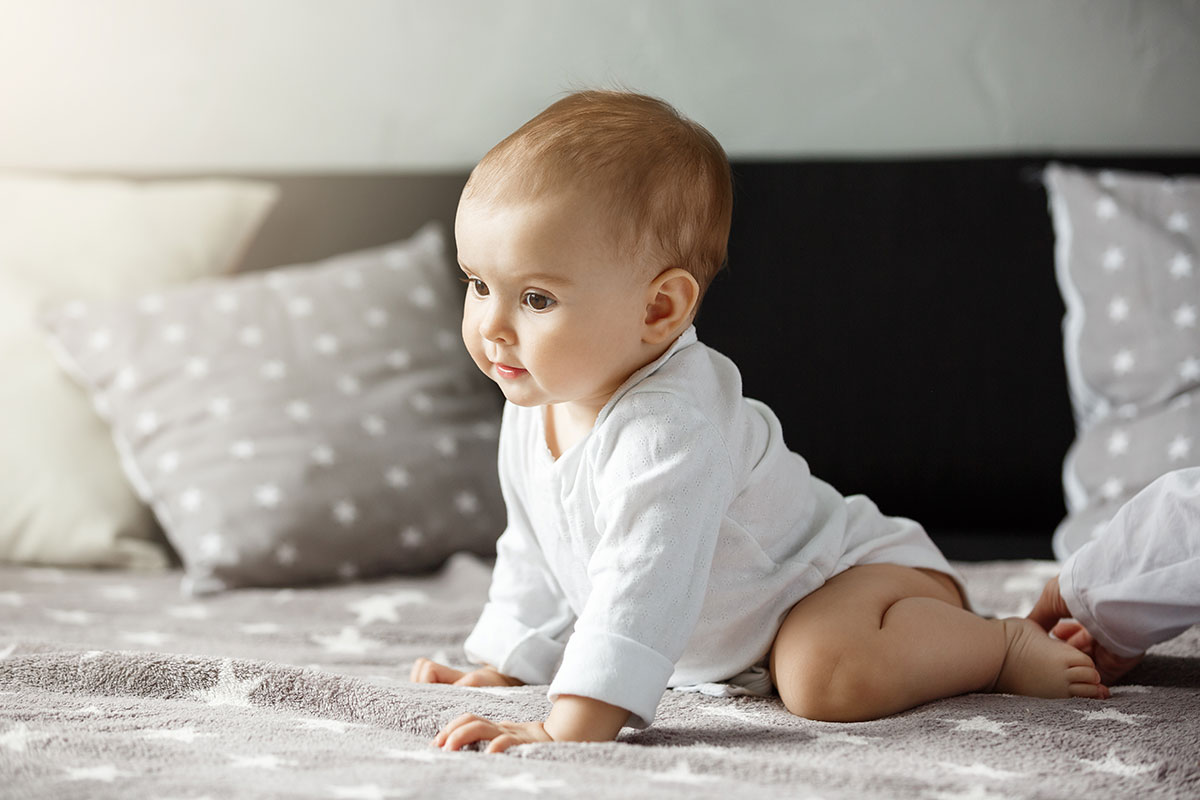
Crawling is an important stage in infant development, although not all babies go through it (or rather, crawl through it). This stage serves as a kind of prelude to further developmental steps, which include independent walking. Crawling is often preceded by crawling, which further strengthens the muscles that allow the baby to move increasingly easily on their knees and, later, on their feet. When does a baby start crawling, how important is it for their development, and how can you help them? Find out in this article!
At what age do babies start crawling?
According to established standards, infants typically begin crawling (i.e., moving on their elbows and knees) between 8 and 11 months of age . These are guidelines intended to inform parents and caregivers about when this process might occur. However, this doesn't necessarily mean it has to happen. A toddler may begin crawling earlier, later, or even skip this stage altogether and immediately begin to stand on their feet on their own. Therefore, crawling is an "optional" transitional stage between crawling and crawling (i.e., moving on their hands and knees). The final time a toddler can begin crawling depends on their muscle development and whether their body is ready. If not, give them as much time as they need. This will definitely be the healthiest for them! 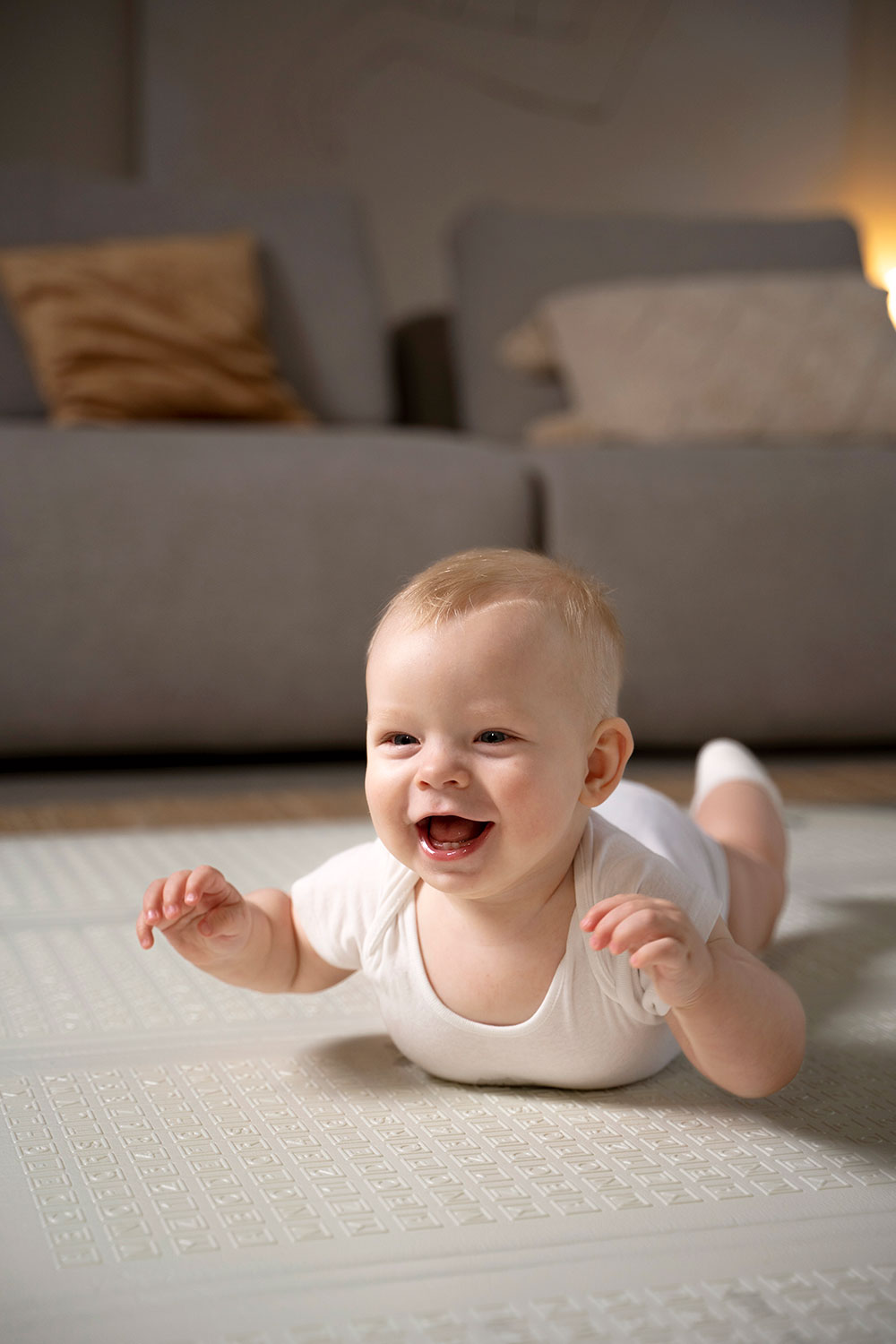
Crawling, regardless of the age at which your child begins to move this way, is an important milestone because
it supports the development of motor coordination, helps maintain balance , and allows them to orient themselves in their surroundings. It also has a beneficial effect on the brain, stimulating both hemispheres. However, if your little one prefers crawling or crawling straight away, don't force them to crawl. You can even return to crawling once they're walking independently by encouraging them with a game or choosing an interesting
gift for your child in the form of a toy that motivates them to crawl towards it on their own.
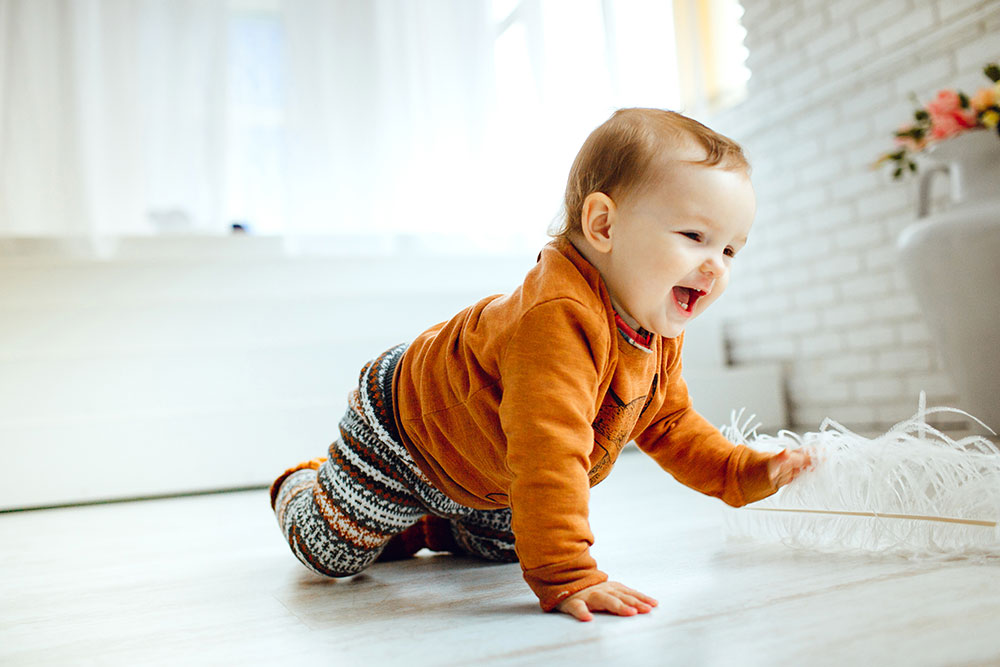
When your baby starts crawling, encourage him!
Crawling can be a bit of a challenge; one day your little one isn't crawling and shows no signs of interest, and the next they're practically running around on their knees and elbows. Some babies have significant difficulty crawling; however, this doesn't mean there's something wrong with their development! If you see your child trying to crawl but not quite succeeding, you can encourage, support, and help them learn. To do this, first and foremost, ensure your child has the right floor conditions for crawling . Cold, hard panels or tiles are definitely not inviting! Equip the learning space with a rug or mat that's gentle on baby's sensitive skin and will also protect them from falling on slippery surfaces. 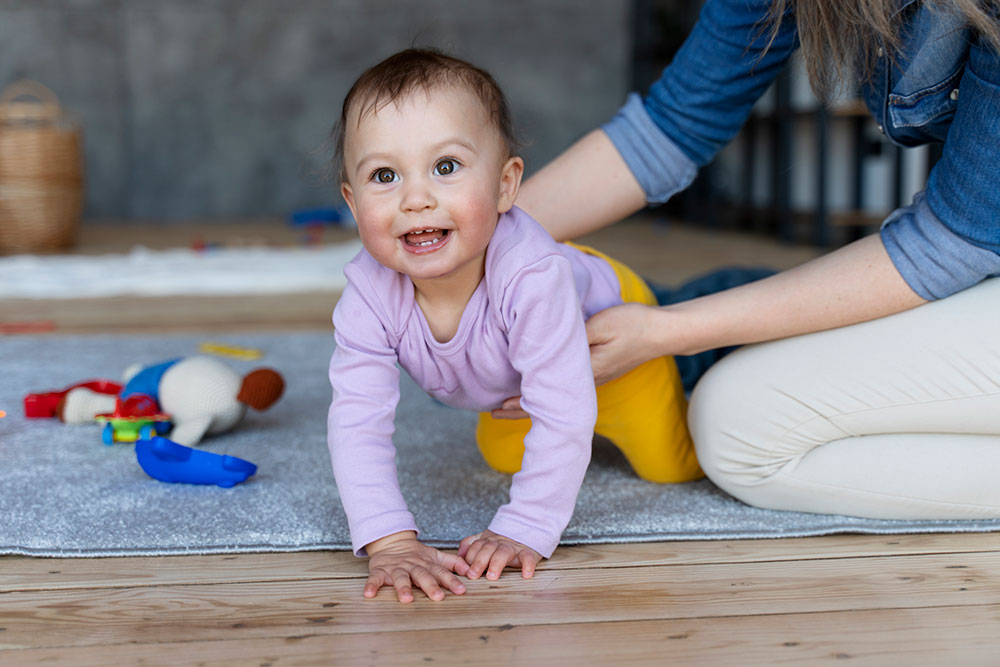 Encourage your child to practice by showing them toys, interesting objects, or their favorite stuffed animal at a distance they can clearly see while lying on their tummy. You can also stand a little further away and call out to them to try to reach you. This may encourage them to try to reach their destination on their own. However, if your child can't push themselves up on their elbows, gets upset, or cries, stop playing, as this can discourage them from further attempts and significantly delay their learning and subsequent actions.
Encourage your child to practice by showing them toys, interesting objects, or their favorite stuffed animal at a distance they can clearly see while lying on their tummy. You can also stand a little further away and call out to them to try to reach you. This may encourage them to try to reach their destination on their own. However, if your child can't push themselves up on their elbows, gets upset, or cries, stop playing, as this can discourage them from further attempts and significantly delay their learning and subsequent actions. What to do when your baby starts crawling to keep him safe?
When a baby begins to crawl properly, it does so in a cross-legged motion (left arm, right leg, and vice versa). Therefore, it's important to ensure they feel comfortable , meaning they have a clean diaper, comfortable clothing, and a safe space around them. This is the best time to install edge protectors, firmly close drawers , and temporarily avoid long tablecloths. Also, remember to secure doors to prevent your baby from getting their fingers caught in the doorframe. 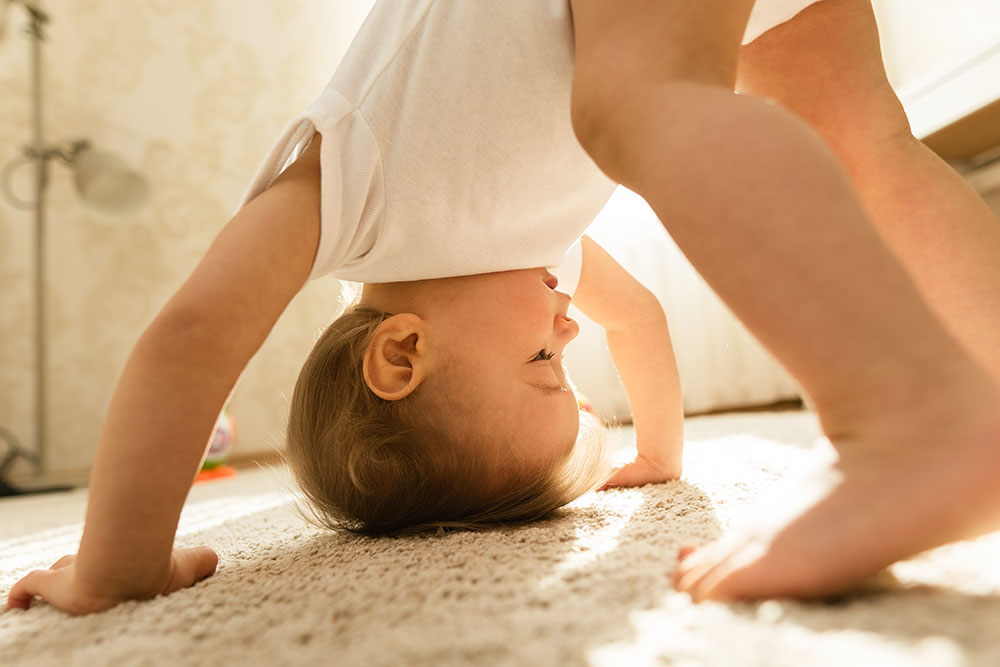 Observe your little one during all crawling attempts, regardless of age. While it doesn't matter whether your baby meets the generally estimated crawling age, if anything about their movements worries you, be sure to see a doctor for a developmental assessment . Incorrect crawling, creeping, or crawling on all fours can create poor movement patterns , which in turn can negatively impact your baby's development, both motor and intellectual. It's also worth seeing a specialist if your baby can crawl but has stopped for some reason, and there's been no progress in crawling or attempting to walk.
Observe your little one during all crawling attempts, regardless of age. While it doesn't matter whether your baby meets the generally estimated crawling age, if anything about their movements worries you, be sure to see a doctor for a developmental assessment . Incorrect crawling, creeping, or crawling on all fours can create poor movement patterns , which in turn can negatively impact your baby's development, both motor and intellectual. It's also worth seeing a specialist if your baby can crawl but has stopped for some reason, and there's been no progress in crawling or attempting to walk.
 Crawling, regardless of the age at which your child begins to move this way, is an important milestone because it supports the development of motor coordination, helps maintain balance , and allows them to orient themselves in their surroundings. It also has a beneficial effect on the brain, stimulating both hemispheres. However, if your little one prefers crawling or crawling straight away, don't force them to crawl. You can even return to crawling once they're walking independently by encouraging them with a game or choosing an interesting gift for your child in the form of a toy that motivates them to crawl towards it on their own.
Crawling, regardless of the age at which your child begins to move this way, is an important milestone because it supports the development of motor coordination, helps maintain balance , and allows them to orient themselves in their surroundings. It also has a beneficial effect on the brain, stimulating both hemispheres. However, if your little one prefers crawling or crawling straight away, don't force them to crawl. You can even return to crawling once they're walking independently by encouraging them with a game or choosing an interesting gift for your child in the form of a toy that motivates them to crawl towards it on their own.
 Encourage your child to practice by showing them toys, interesting objects, or their favorite stuffed animal at a distance they can clearly see while lying on their tummy. You can also stand a little further away and call out to them to try to reach you. This may encourage them to try to reach their destination on their own. However, if your child can't push themselves up on their elbows, gets upset, or cries, stop playing, as this can discourage them from further attempts and significantly delay their learning and subsequent actions.
Encourage your child to practice by showing them toys, interesting objects, or their favorite stuffed animal at a distance they can clearly see while lying on their tummy. You can also stand a little further away and call out to them to try to reach you. This may encourage them to try to reach their destination on their own. However, if your child can't push themselves up on their elbows, gets upset, or cries, stop playing, as this can discourage them from further attempts and significantly delay their learning and subsequent actions. Observe your little one during all crawling attempts, regardless of age. While it doesn't matter whether your baby meets the generally estimated crawling age, if anything about their movements worries you, be sure to see a doctor for a developmental assessment . Incorrect crawling, creeping, or crawling on all fours can create poor movement patterns , which in turn can negatively impact your baby's development, both motor and intellectual. It's also worth seeing a specialist if your baby can crawl but has stopped for some reason, and there's been no progress in crawling or attempting to walk.
Observe your little one during all crawling attempts, regardless of age. While it doesn't matter whether your baby meets the generally estimated crawling age, if anything about their movements worries you, be sure to see a doctor for a developmental assessment . Incorrect crawling, creeping, or crawling on all fours can create poor movement patterns , which in turn can negatively impact your baby's development, both motor and intellectual. It's also worth seeing a specialist if your baby can crawl but has stopped for some reason, and there's been no progress in crawling or attempting to walk.

Podziel się:
What to do with a child in Warsaw? - Winter in Warsaw
Take Your Child on a Space Journey! - Save the Planet's Multisensory Exhibition